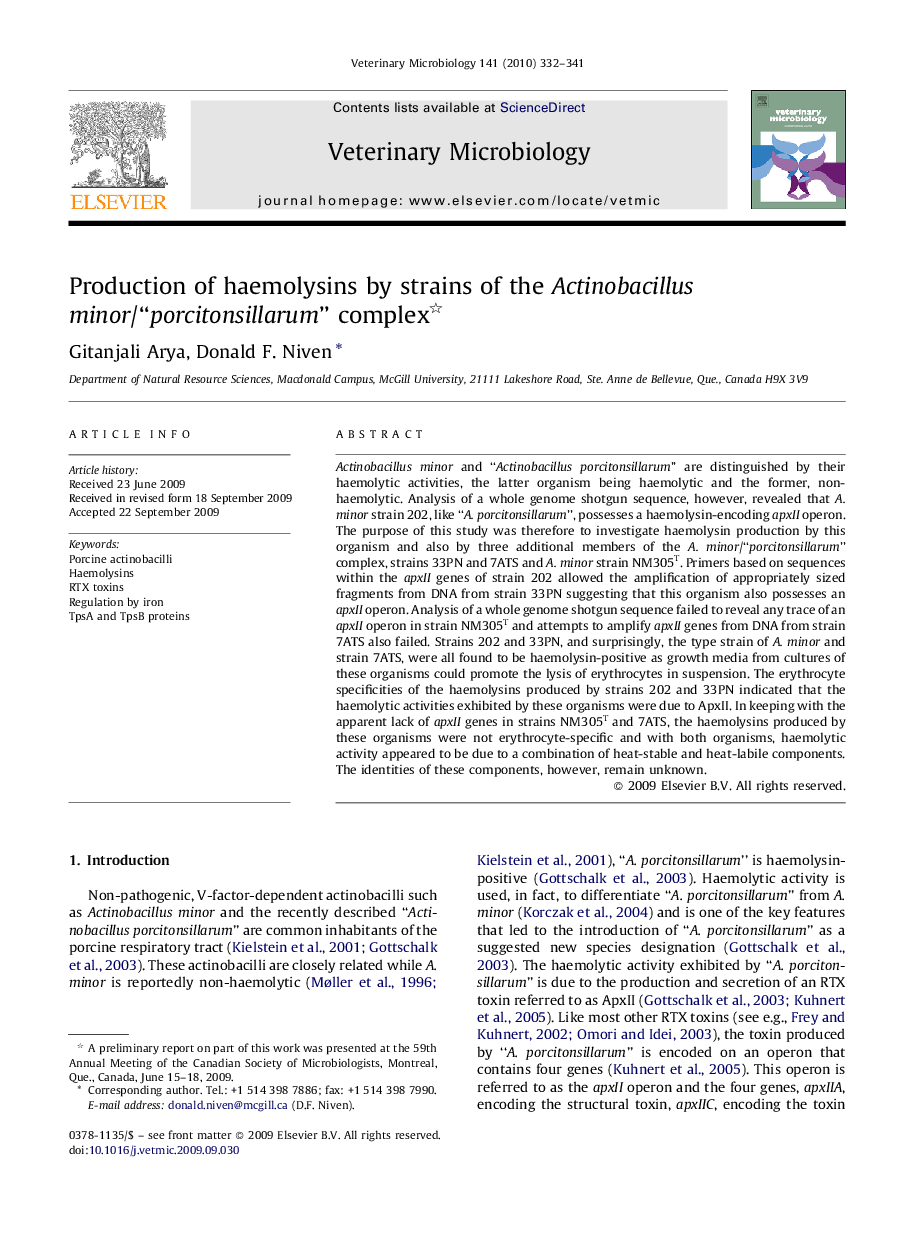| کد مقاله | کد نشریه | سال انتشار | مقاله انگلیسی | نسخه تمام متن |
|---|---|---|---|---|
| 2467817 | 1555416 | 2010 | 10 صفحه PDF | دانلود رایگان |

Actinobacillus minor and “Actinobacillus porcitonsillarum” are distinguished by their haemolytic activities, the latter organism being haemolytic and the former, non-haemolytic. Analysis of a whole genome shotgun sequence, however, revealed that A. minor strain 202, like “A. porcitonsillarum”, possesses a haemolysin-encoding apxII operon. The purpose of this study was therefore to investigate haemolysin production by this organism and also by three additional members of the A. minor/“porcitonsillarum” complex, strains 33PN and 7ATS and A. minor strain NM305T. Primers based on sequences within the apxII genes of strain 202 allowed the amplification of appropriately sized fragments from DNA from strain 33PN suggesting that this organism also possesses an apxII operon. Analysis of a whole genome shotgun sequence failed to reveal any trace of an apxII operon in strain NM305T and attempts to amplify apxII genes from DNA from strain 7ATS also failed. Strains 202 and 33PN, and surprisingly, the type strain of A. minor and strain 7ATS, were all found to be haemolysin-positive as growth media from cultures of these organisms could promote the lysis of erythrocytes in suspension. The erythrocyte specificities of the haemolysins produced by strains 202 and 33PN indicated that the haemolytic activities exhibited by these organisms were due to ApxII. In keeping with the apparent lack of apxII genes in strains NM305T and 7ATS, the haemolysins produced by these organisms were not erythrocyte-specific and with both organisms, haemolytic activity appeared to be due to a combination of heat-stable and heat-labile components. The identities of these components, however, remain unknown.
Journal: Veterinary Microbiology - Volume 141, Issues 3–4, 24 March 2010, Pages 332–341